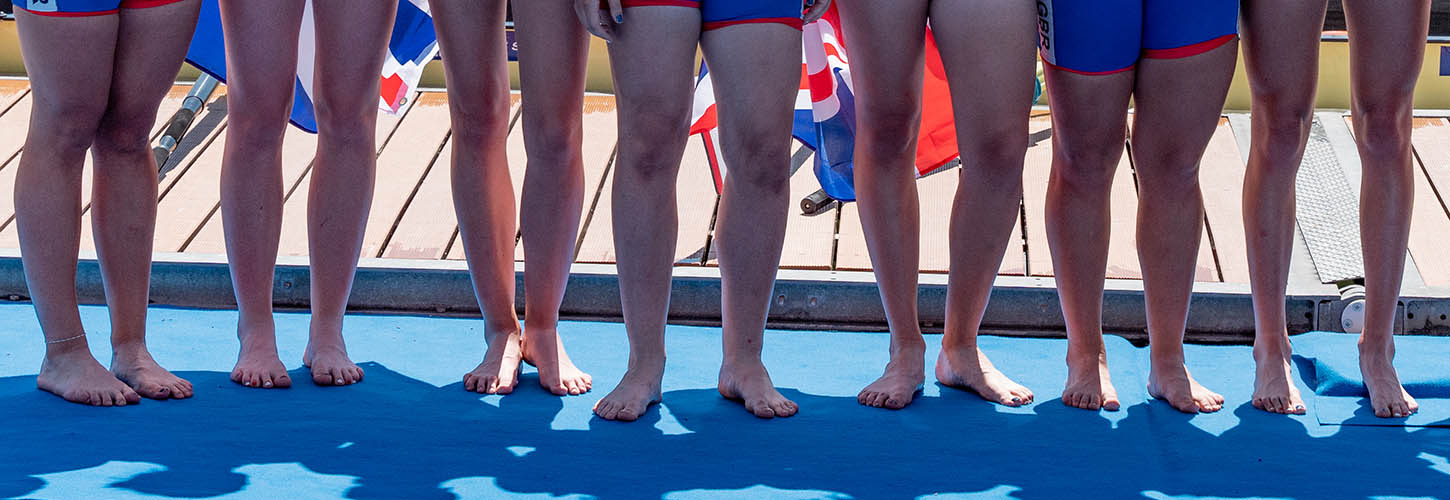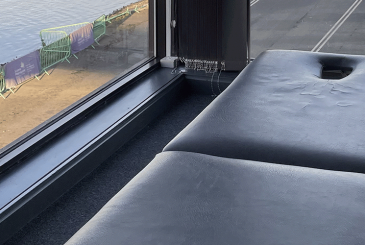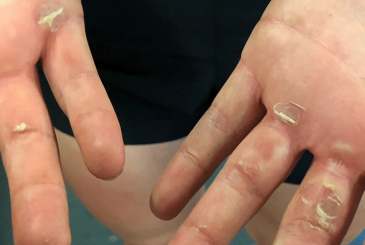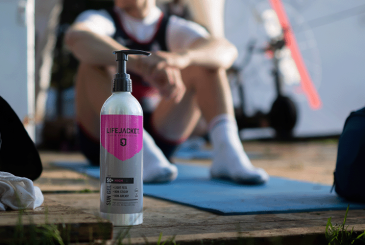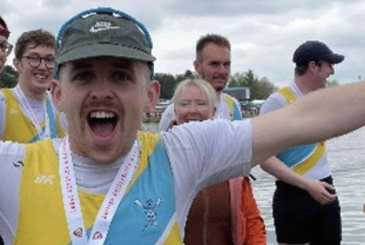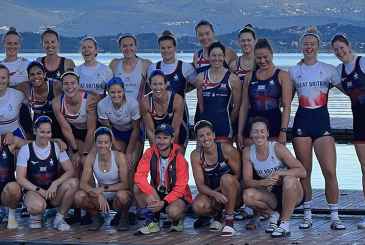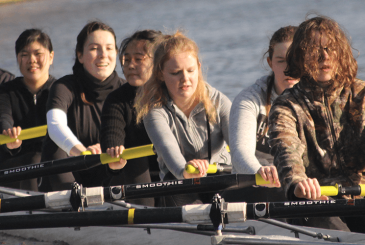Knee problems (alongside shoulder issues) are the second most prominent injuries in young rowers after back injuries. Patricia Carswell talks to Kirsty Hunter, the GB Rowing Team Under 19 physiotherapist and a former international rower about why this is and what athletes and their coaches can do to reduce the risk of injury.
Why do young rowers get knee injuries?
Growing pains
“Bones don’t stop growing until we are about 19 to 21”, says Kirsty. This makes young athletes more prone to fractures of the growth plate. “In the knee that’s things like Osgood Schlatters, where the tendon is pulling on the bone where it’s attaching to its anchor point, and they can end up getting acute inflammatory injuries. The tendon is stronger than the bone itself, because the bone is not fully solid at that age.”
Added risk for young female athletes
Anyone coaching young female athletes should be aware that the risk of joint and ligament injuries increases through the menstrual cycle. “In our luteal phase, the second half of our menstrual cycle, we are at double the risk of injuries, partly because of ligament laxity,” says Kirsty.
Knee problems: The solution
Mix it up
Research shows that focusing solely on one activity can be problematic. “If athletes specialise early, rowing will potentially lose them because of injury,” she says. “Successful adult world-class rowers have engaged in a number of sports during childhood and adolescence.”
If you’re coaching young athletes, variety is key. “Yes, we they need to learn how to row and to move a boat, but can they do other things like running, or play some sort of multi-directional sport such as tennis?” asks Kirsty. “What else can we do that is fun, that engages athletes in a different way?”
Get the balance right
Mobility issues can have a significant impact on knee health. “Obvious things to look for are hip muscle length (if the hip is tighter on one side than the other, you’re going to see a domino effect on the leg), calf muscle length, quad and hamstring length,” says Kirsty. To mitigate this, young athletes can learn to self-screen, noticing when muscles are tight and spot imbalances between one side and the other.
“We’re not looking for the same flexibility as gymnasts or ballet dancers, but for equal flexibility between left and right.”
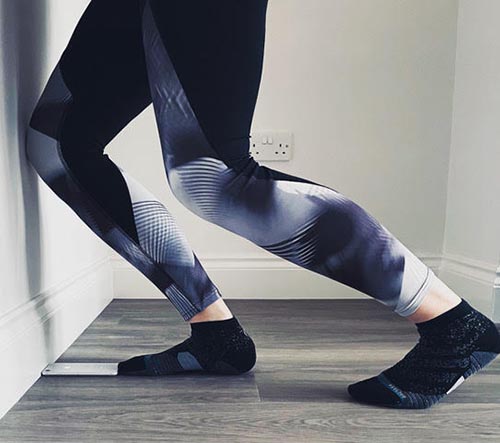
Athletes should have evenly-balanced strength, too. “Can you lunge, can you squat? Can you do the same number of sets on each side?” says Kirsty. She suggests sitting down from standing on one leg; the traditional wisdom is that if the knee drops across the midline it suggests a lack of strength in muscles around the hip. Another useful exercise is the knee-to-wall stretch, to assess relative calf length.
It is wise for youngsters to do a mobility warm-up, she says, and recommends a dynamic approach than static stretching. Dynamic warm ups increase blood flow, heart rate and joint mobility as well as engaging the muscles you’ll need to use when rowing. Importantly, she adds, “We’re not looking for the same flexibility as gymnasts or ballet dancers, but for equal flexibility between left and right.”
Kirsty recommends balancing exercises on different pieces of apparatus. She also suggests barefoot work (where it’s safe to do so) and plyometric exercises. “We can do really fun stuff like balancing and throwing and catching on one leg, hopping, skipping, that kind of thing.”
Technical solutions
Boat set-up can make a huge difference to a young rower’s physiology, says Kirsty. “Adjusting the height of the foot stretcher can cause a difference from a biomechanical point of view. If you’ve got it really high, it’s harder to rock over and get into the front end. Dropping the foot stretcher slightly will reduce the pull in the hamstrings, which are found at the back of the thigh and attach below the knee. Too low, however, might mean the knees aren’t able to straighten fully.”
Sweep rowers should be aware of the position of their knees as they rotate through the recovery. “When you think about that valgus [knock-kneed] position of the knee, is that maybe causing some sort of issue? Is there a bit of weakness or tightness elsewhere in the chain?”
Healthy living
To avoid knee (and other) injuries, young athletes should get enough sleep and a good diet with enough calories. She also emphasises the importance of good footwear. “We need to look after our knees from the ground up.” Sliders, flipflops and crocs are fine for the beach and going to the boat, but not for walking any distance. “We’re having to work harder to keep the shoe on and the muscles pretty much all touch near the knee.”
It’s a good idea to be aware of general ergonomics, too – how young rowers sit, stand and carry their bags. “Symmetry is important. Wear your rucksack on both shoulders; uncross your legs; don’t slump into the computer.”
Call the POLICE!
When injury does strike, a swift response is best. The traditional “RICE” (rest-ice-compress-elevate) advice has now been superseded by “POLICE”, where rest has been replaced by protection and optimal loading (so you should keep mobile, although not pushing into pain).
If knee pain persists, particularly if it manifests mostly at night, it’s wise to consult a GP, says Kirsty. “This is really rare, but it can be things like bone cancer, and young people often don’t get other symptoms such as weight loss.”
Generally speaking, injuries should not be the norm in young rowers, says Kirsty. With sensible precautions and quick action when problems arise, young athletes should be able to enjoy good knee health into adulthood.


